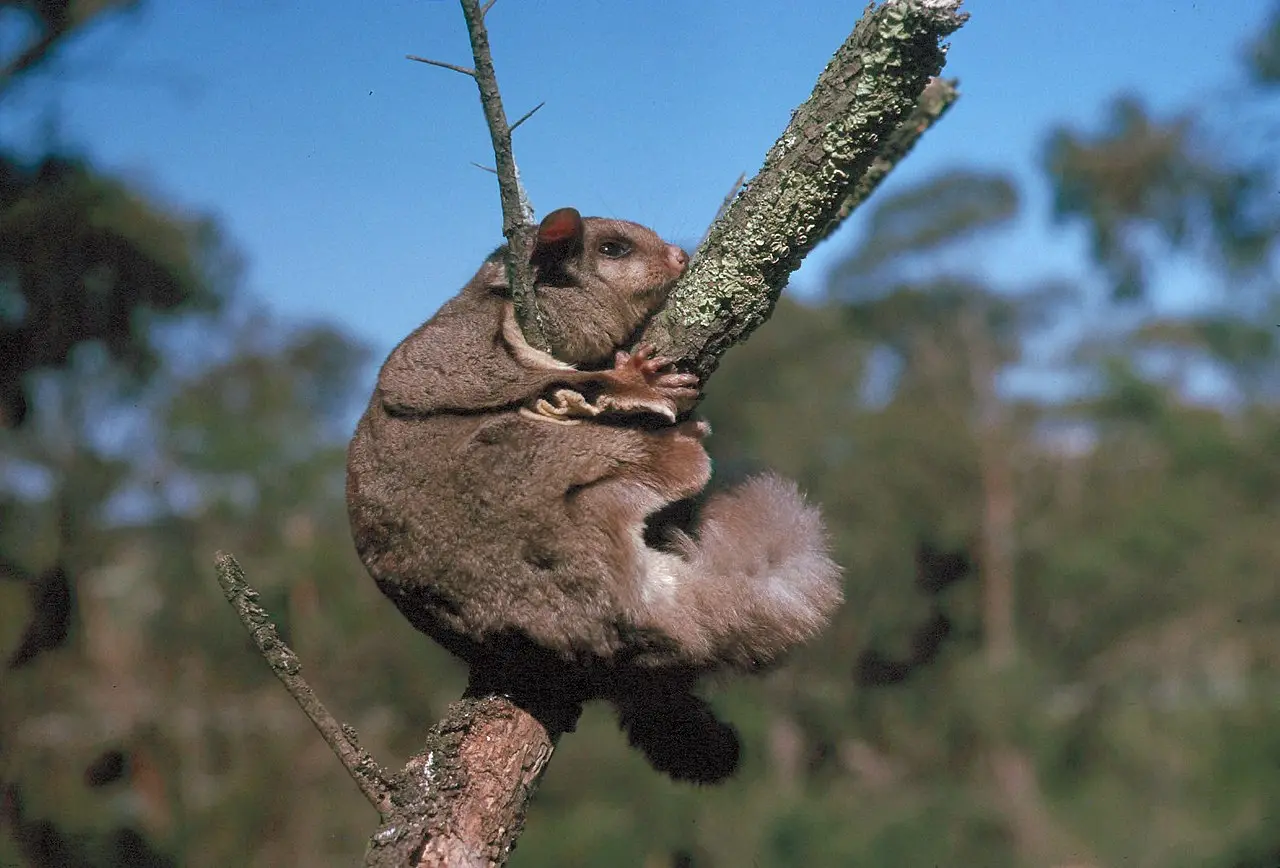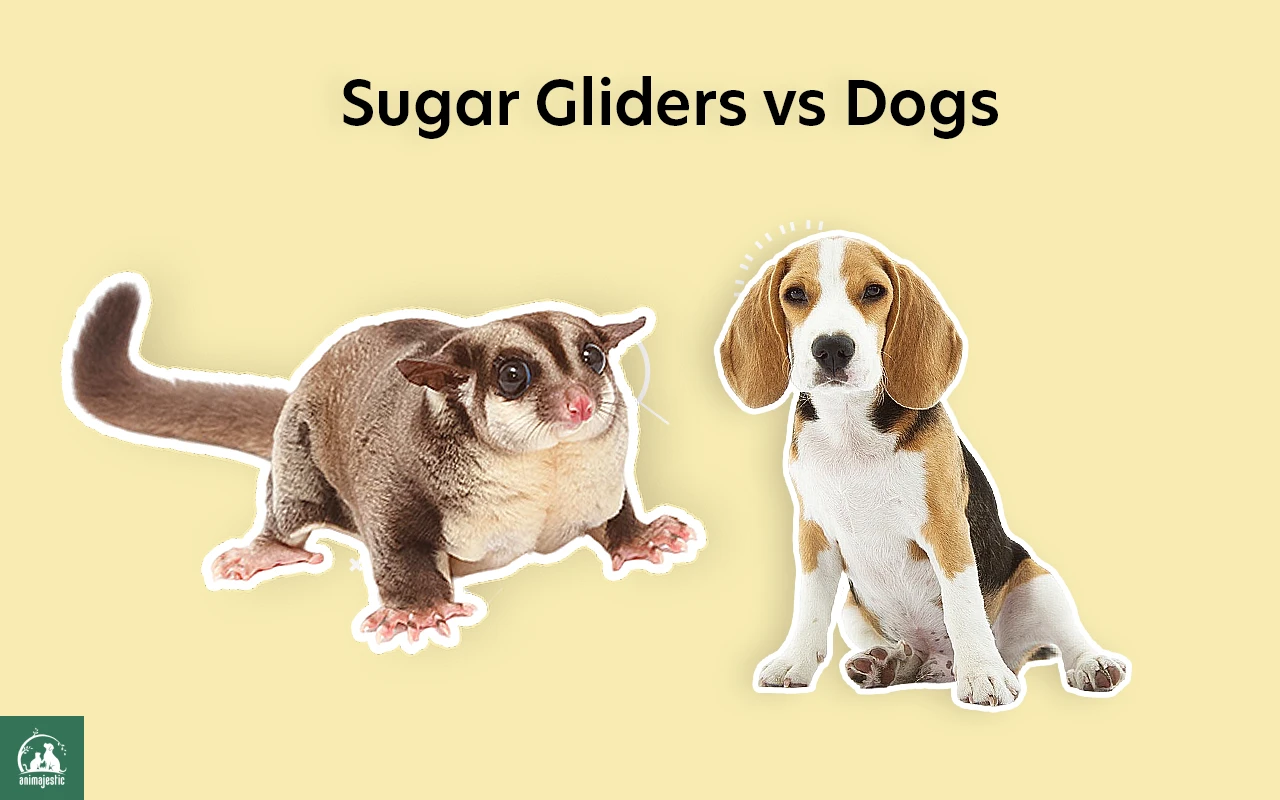Picture this: your sugar glider gliding through the air within the comfy confines of your living room while man’s best friend, the ever-loyal dog, cheerfully watches from below. Quite the sight, isn’t it? And that begs the question: can a sugar glider and a dog live together in perfect harmony as pets?
Before we go any further, let’s take a closer look at what makes sugar gliders and dogs unique creatures, and how their coexistence can pan out in a shared household.
Sugar Gliders

Sugar gliders are small, nocturnal marsupials belonging to the Petaurus family. Thanks to their social nature and bonding proclivities, these cute critters have found a place in the hearts (and homes) of many animal lovers.
To flourish as pets, sugar gliders need loads of TLC(Tender Loving Care), and require a specialized habitat that elicits their tree-dwelling instincts. Equipped with a sweet tooth for nectar and fruits, their diet also calls for special attewntion.
Dogs

From German Shepherds to Golden Retrievers, dogs can be found in various breeds, each carrying its height, temperament and energy levels. With their inherent loyalty and lovable nature, dogs make for ideal companions.
Although happy residing in countless different environments, a dog’s specific needs are largely influenced by breed. Some canines relish outdoor activities, while others prefer being pampered with indoor snuggles and luxury treats.
Can They Co-Exist?
In many cases, sugar gliders and dogs can co-exist in the same home with the proper precautions, adjustments and management. However, there are no guarantees. Some key considerations:
- Some dogs will naturally tolerate or ignore sugar gliders with proper socialization while others may see them as prey. Temperament plays a big factor.
- Constant supervision, separate spaces and barriers are absolutely necessary, especially at first. Unsupervised interactions should be avoided.
- Patience is key. It may take weeks, months or longer for pets to fully adjust to cohabiting, if at all. Owners must set a good example and not force interactions.
Here’s an adorable video from Loulou & Friends, showing their dog and sugar gliders getting along:
Potential Challenges of Keeping Sugar Gliders and Dogs Together
Living with both sugar gliders and dogs can have its challenges due to their distinct species differences. While some sugar glider-dog pairs adapt well to shared living spaces, others struggle. With patience and proper preparation, many of the potential issues below can be minimized. However, separating pets completely when needed is always the safest option.
Instinctual Differences
Sugar gliders are small, nocturnal, arboreal marsupials, while dogs are diurnal predators. Gliders feel safest high off the ground in dark, quiet spaces, while dogs naturally hunt and chase moving creatures. This mismatch in instincts demands care, supervision and separate living spaces.
Differing Schedules
Sugar gliders are most active at night, while dogs require exercise and mental stimulation during the day. These opposite schedules mean pets must have separate resting places that must be undisturbed when the other is awake. Glassers typically sleep 16-20 hours a day, while dogs sleep 9-14.
Size and Strength Mismatches
A sugar glider weighs just 3–5 ounces compared to a small dog that easily weighs 30 pounds. Dogs can accidentally injure or kill gliders through rough play. Constant vigilance is needed to prevent injuries. Many gliders become fearful of dogs due to this risk.
Protective and Territorial Instincts
Dogs’ hardwired protective instincts may view gliders as threats, triggering aggression. But gliders also behave territorially. Separate eating, sleeping and litter spaces can help reduce conflicts over resources.
Tips for introducing Sugar Gliders to Dogs
If you’re determined to make this pairing a reality, we’ve got you covered! Keep these pointers in mind when facilitating introductions:
Gradual introduction
Let the dog familiarize itself with the sugar glider’s scent before letting them share the same space. Slow and steady wins the harmony race!
Supervised interactions
Monitor their sessions closely, ensuring no sudden lunges. As much as we adore our pooches, one ‘playful’ nip is all it takes for your sugar glider to suffer some serious injuries.
Separate living spaces
Offering your sugar glider a safe haven away from your dog’s curious nose can provide comfort and stress relief.
Training your dog to respect the sugar glider
Just as you teach your canine to fetch, leash manners or house training, instill in them the understanding that the sugar glider is a friend, not a prey.
Signs a Sugar Glider and Dog are Getting Along
Here are some signs that indicate a sugar glider and dog may be learning to get along:
- The dog ignores or shows little interest in the glider. No chasing, barking or staring at the glider.
- The glider explores its environment without appearing fearful of the dog. It doesn’t run and hide at the sight of the dog.
- The pets can be in close proximity without tension. They may even sleep together peacefully.
- The glider gradually spends more time outside of its cage when the dog is present. It begins to forage, play and explore normally.
- The glider stops exhibiting defensive behavior toward the dog. It no longer bites, chirps, hisses or whips it’s tail in the dog’s presence.
- The dog remains calm when the glider’s noises or movements abruptly change. There are no overreactions to normal glider sounds or movements.
- You are able to positively reinforce both pets for ignoring each other and calmly coexisting in shared spaces.
- Both pets appear comfortable and relaxed in each other’s presence over time. They develop routines around each other.
Conclusion
Making your sugar glider live alongside your dog requires patience, vigilance, and understanding the needs of both pets. You should be prepared to commit the time and effort to slowly introduce them to each other and ensure no problems occur.
